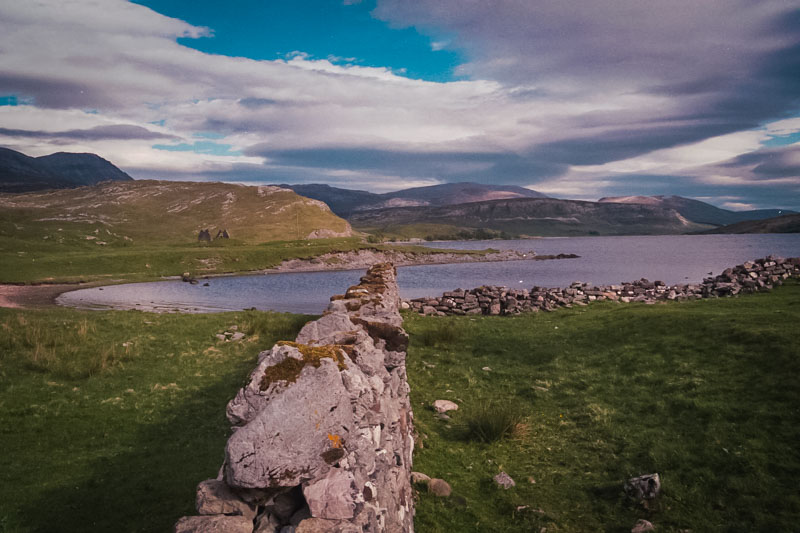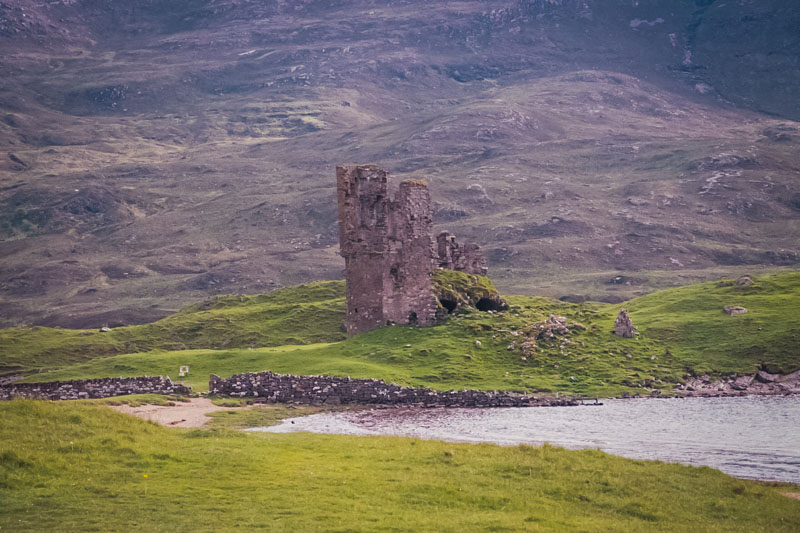
Ardvreck castle was originally the property of the Macleods of Assynt. Later, James Graham, Marquis of Montrose, took refuge here in 1650, but he was betrayed by Covenanters and executed by drawing and quartering in Edinburgh (ugh!).
While much ruined, Ardvreck is a keep of three stories, with a round stair turret corbelled out to a square caphouse (see burleigh castle for another example of this style). There are shot holes in the walls and the stone foundations that can still be seen originally surrounded a walled garden. The grounds of the castle are actually lower then the surrounding road, and it’s quite a hike to get down to the shore where the castle sits.
Ardvreck is really quite large — we followed the stone foundations, now covered with grass, out for quite a ways. The remains of the standing tower are just a tiny part of the castle itself. The castle grounds jut into the north end of Loch Assynt. All we could see from the road was the tower, but Ardvreck must have been an imposing castle when it was built.

Not much remains of the tower or stair turret except a thin sliver of wall. The three basements were vaulted, although much collapsed. The ruin is posted as being very dangerous, but other than some loose stones in the collapsed basement, it seems pretty stable. I did have to convince Mark that climbing into the exposed (and collapsed) cellar wasn’t a very good idea, though.
The castle is reputed to be haunted by the weeping ghost of one of the daughters of a Macloed chief who lived here, who died by jumping from a window. A tall, grey-clad man has also been seen. You know, we haven’t seen any of the ghosts yet. Nowhere. Hmm.
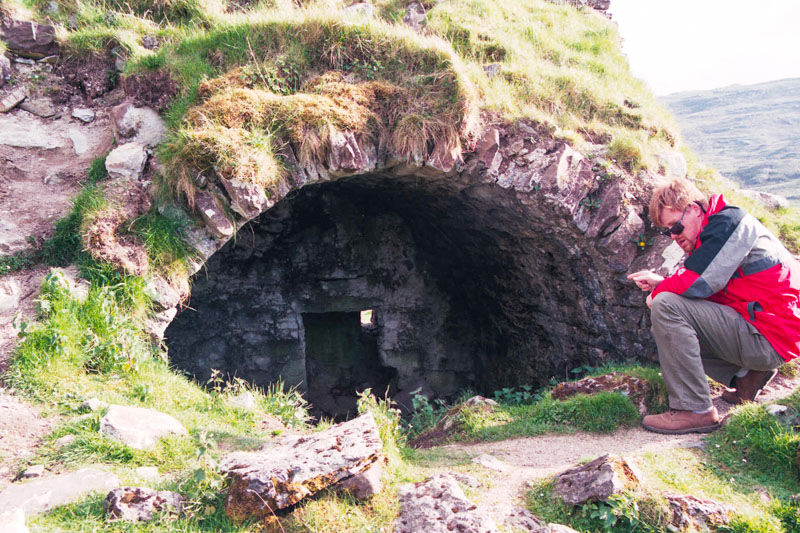
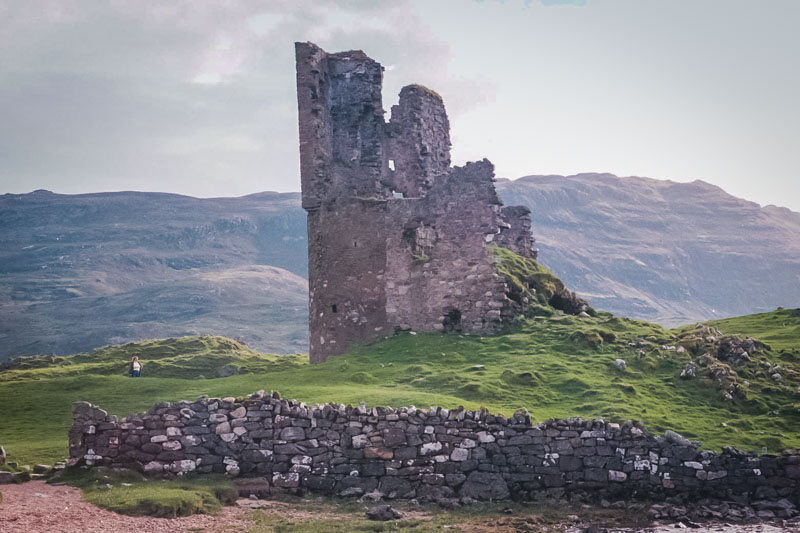
Ardvreck is a very pretty ruin. The ragged tower stands alone amongst the grass-covered and rolling foundation walls. From across the stream that flows into Loch Assynt, we could see the vague outline of the castle grounds, and the rubble of the outer wall down to the shore.
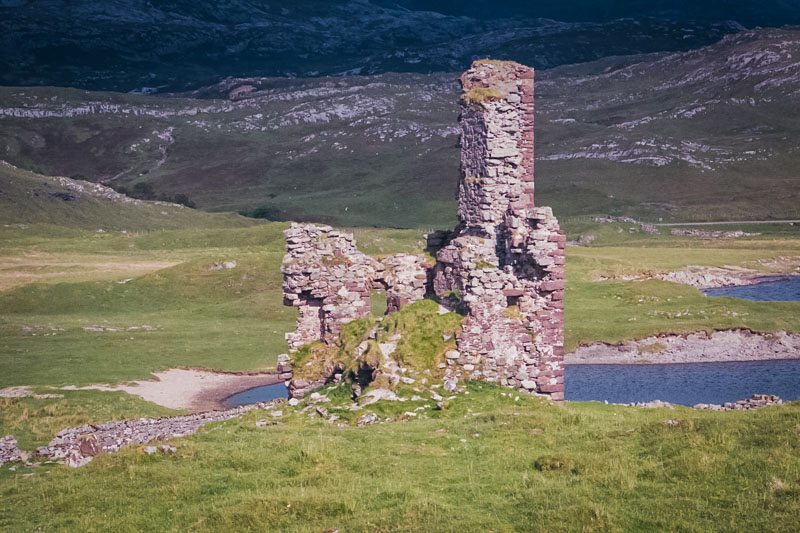
A view from the landward side of the tower. Most of the stones have been overgrown with grass and are slowly disappearing. From the feel of it, there were a lot of stones under the grass, and we decided that quite a bit of the rubble has simply been buried in the lush grash. It made walking a bit tricky, though, since you ran the risk of your foot slipping off a buried stone or unstable rubble under the grass.
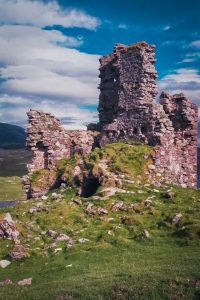
Hence, the ‘Dangerous Ruins’ sign, I’m sure. We were very careful walking anywhere near the tower, since I’m sure that there are other buried cellars under the hill that may or may not be solid. The buried rubble is clearer here, obviously where the walls have fallen and been left to disappear. When the sun came out, we got a wonderful view of the light stone that once made up this castle.
Once again, we were the only people to be wandering this site. Most of the time during our trip, we were at out-of-the-way places and didn’t see anyone else around. Every once in a while we’d meet up with a few other travellers, but we apparently avoided the ‘tourist traps’ effectively. Most people seem to want to visit the museum-pieces; me, well, I wanted to stop at every pile of rocks that I saw. I find the ruins much more interesting than someone’s interpretation of how things should be.

